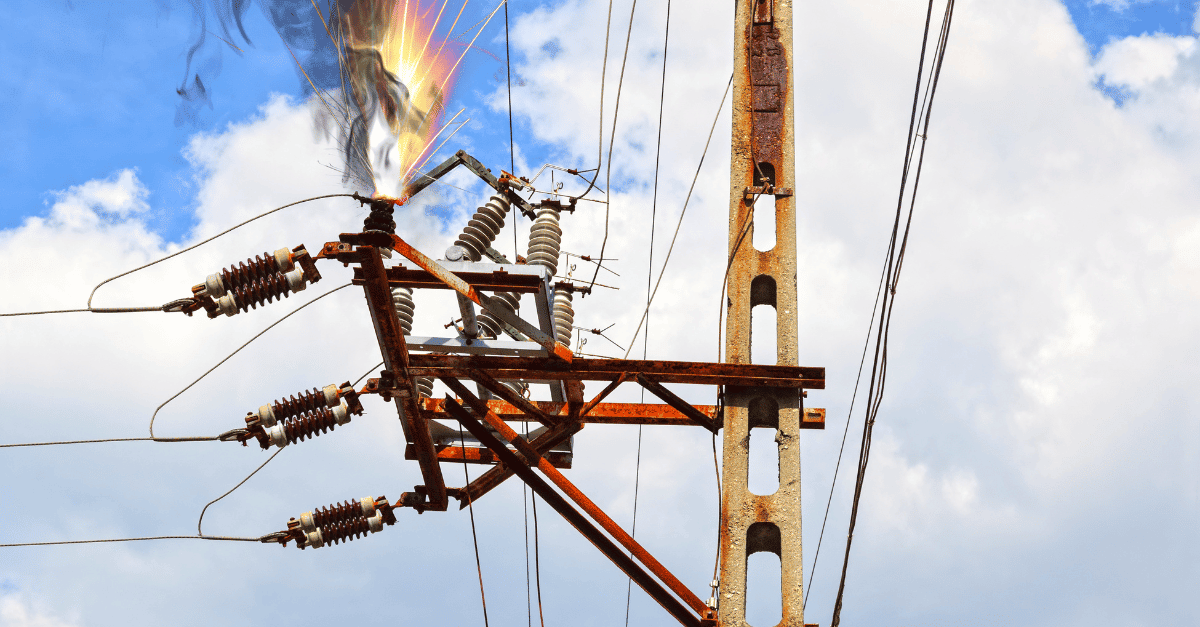The electrical distribution grid is a giant interconnected system on earth. The system distributes electricity to homes, industries, and other end users. In other words, our society and infrastructure depend on this essential grid to function.
Unfortunately, various factors are putting the grid at risk. From solar activity to electromagnetic pulses to natural disasters, failures can be expensive and life-threatening.
To reduce electricity grid disruptions, maintain safety, and prevent faults from becoming widespread, using a turnkey solution for grid fault indication can be a viable option.
Safegrid offers a system called the Safegrid Intelligent Grid System™. This innovative, modern solution can precisely locate and accurately predict grid faults. As a result, this can help prevent expansive and life-threatening grid errors and improve grid resiliency.
Increasing problems in the grid
The delivery of power to customers is usually highly reliable. However, the grid faces a wide range of threats. It includes more significant but rare hazards that can cause widespread disruptions and dangerous consequences.
It includes natural disasters such as solar storms, hurricanes, and earthquakes. For example, a burst of solar particles can interact with the earth’s magnetic field, which could end up overloading critical grid components.
Humans can also contribute to electrical grid failures through various scenarios, such as committing cyberattacks, detonating nuclear weapons, and physically attacking specific grid components.
In addition to natural disasters and human-made threats, today’s electrical grid is experiencing other challenges. For example, the increase in renewable and remote energy generation, an aging transmission and distribution infrastructure, an increase in global demand for electricity, and impending climate change threaten to overwhelm the grid and negatively affect grid stability.
Electrical grid fault detection with Safegrid
Due to the various challenges the electrical grid faces, negative consequences can ensue. Therefore, addressing these challenges is paramount.
Safegrid can help mitigate the various risks that threaten the electrical grid and bring the grid to the 21st century.
With Safegrid Intelligent Grid System™, utilities and grid operators can achieve complete 24/7 visibility into the grid. By gaining visibility into the fault locations, responding crews can instantly navigate and fix the faults. It can lead to many benefits, including:
- Quicker restoration of electricity after power disturbances
- Reduced operations and management costs for utilities
- Improved security
Safegrid's Intelligent Grid System™ products include:
- Grayfox™: Wireless fault passage indicator (FPI) allows for underground cable monitoring with high-frequency measuring, complete wireless connectivity, immediate notification of grid faults, and backup power for up to 1 day. When used in conjunction with GridGuardian, both play a crucial part in fault prediction and preventative grid maintenance.
- Grayhawk™:
Wireless FPI that allows for overhead cable monitoring with high-frequency measuring. This technology can sense minor disruptions with maximum accuracy and speed. Grayhawk™ works with the system’s brain, GridGuardian™, to identify faults that traditional fault indication devices or network monitoring systems fail to detect. It makes for more instant
fault detection with no prolonged grid disruptions. - GridGuardian™: Geospatial information system (GIS) based real-time monitoring device that uses cloud-based technology to prevent grid faults. GridGuardian™ is the essential core part of Safegrid Intelligent Grid System™. Benefits of using this device include:
- Secure communication with the cloud server.
- Instant SMS alerts with location information.
- Easy integration with dashboard systems.
GridGuardian™ analyses all data from the sensors Grayfox™ and Grayhawk™.
Outlook for the future
On a global scale, the percentage of people with access to electricity rises. This means that more and more people are becoming connected to the electrical grid, increasing the risk of overwhelming the grid.
Utilities, policymakers, and communities agree that the aging electric transmission and distribution (T&D) grid needs significant upgrades to withstand future challenges. Furthermore, many of the electrical T&D grids in service worldwide came about more than half a century ago. While there have been changes and upgrades over the years, engineers designed existing systems with very different resources in mind than what is regularly coming online today.
However, as the demand for renewable energy increases, customer needs evolve, and operational risks increase, it’s becoming more and more essential to deal with these issues on a global scale.
And as a result of these changes, modernising the grid is critical. It involves using grid-technology innovations such as grid management systems that utilise cloud technology. These technologies will be vital in the face of climate change.
Dealing with the unpredictable
Systems may handle increases in demand and severe weather conditions—as long as grid operators can reliably predict the dangers. However, unpredictable weather conditions related to global warming are likely to overwhelm grids.
Extreme weather events such as extreme heat, winter storms, droughts, wildfires, and hurricanes will be more than electric grids can handle, putting them at risk of catastrophic failure. These weather conditions can affect every grid aspect, from generation, transmission, and distribution, to demand electricity.
And unfortunately, power plants—the fossil-fueled “heart” of the gird—can make climate change worse and the planet even warmer, creating an ongoing cycle that’s seemingly impossible to stop.
Increasing grid resilience
Luckily, we can take action to reduce the strain on our electrical grids. It might include shifting to renewable and clean energy and reducing energy consumption. In addition to these steps, utilities and grid operators can leverage intelligent grid technologies that use cloud-connected sensors on various grid parts.
This allows operators to gain visibility and insights into how critical electrical grid components function and perform. As a result, utilities and grid operators can more quickly detect and fix grid issues before they become widespread, which could make power grids more resilient.

